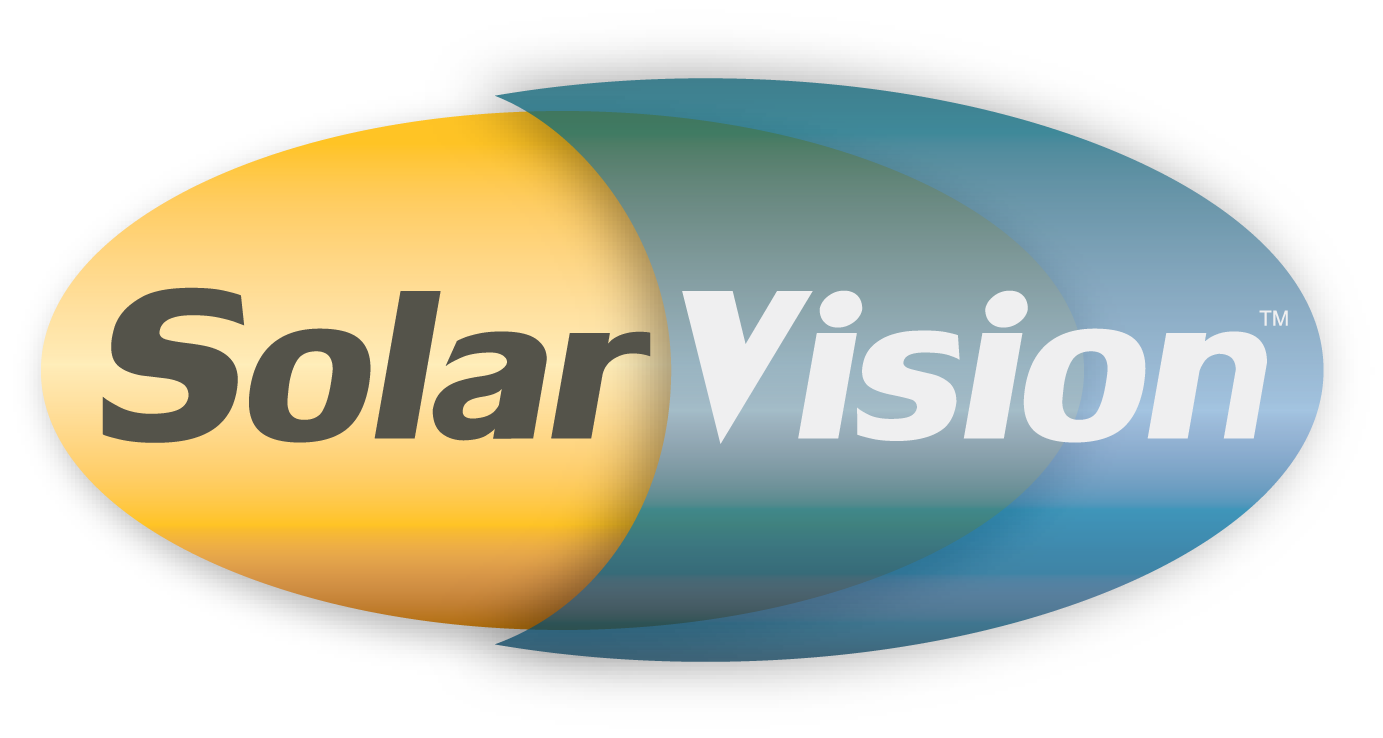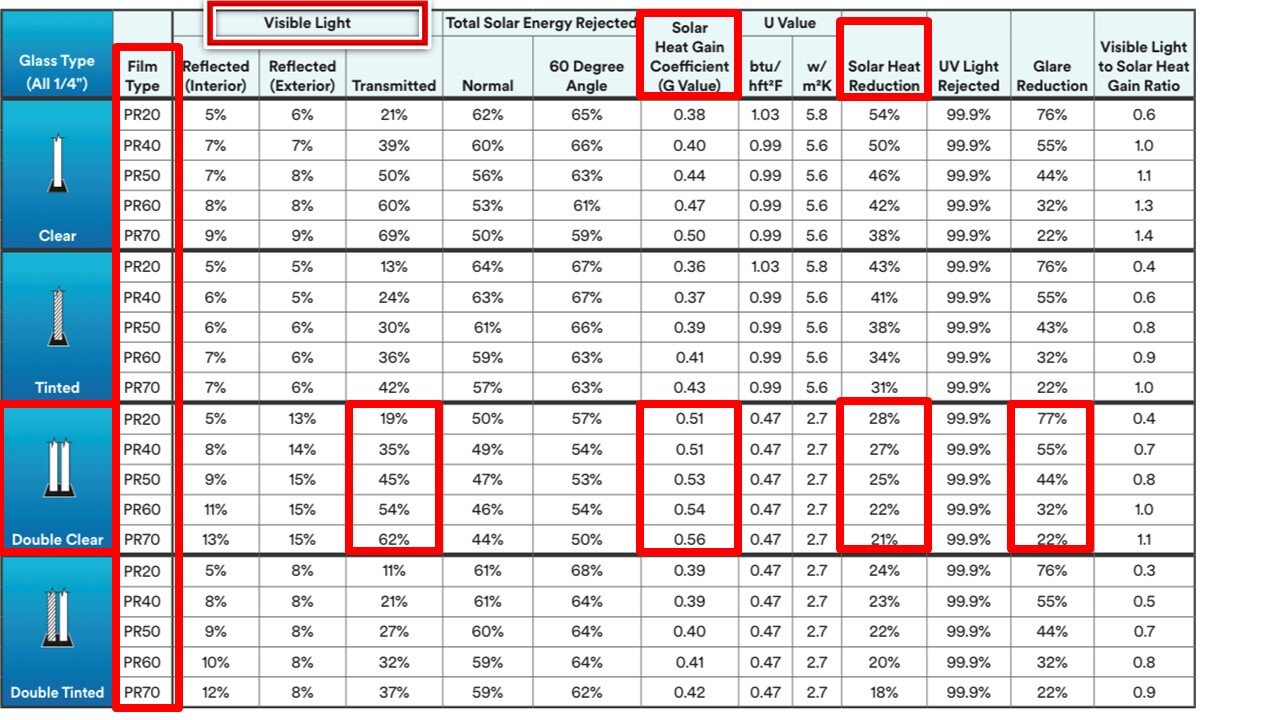Have you ever been asked to look at data you aren’t familiar with, and to decipher it yourself? If not, you probably will soon if you’re shopping for window film. We in the Window Film Industry have a tendency to hand over product cards with tons of data, but not much insight on what it all means.
When shopping for window film, you’ll be handed a window film card, generally with an enclosed sample, and all the pertinent info about that product on it. But what does it mean to you, and what data or numbers should you be most concerned with? Well that all depends on what you’re buying solar control film for. Is it fading, one-way visibility, or just plain heat. This data can help you figure out which film product will work best for your needs.
The technical data above is for 3M’s Interior Prestige Window Film Products, and since most of us are looking to add film to double paned clear glass, we’re going to use those numbers in our examples below.
The First Number you’ll notice on Prestige or any window film card for that matter is a number following the name of the product. This number roughly represents the amount of visible light transmitted, and this is generally true for most window film manufacturer’s products.
Product Name = Visible Light Transmitted (The higher the VLT, the lighter the film). If you want to add a film that will not change the look of your glass, you’ll want to choose a window film with a high VLT, and probably not anything with a VLT under 45%.
Prestige 70: 62% VLT
Prestige 50: 45% VLT
Now that we know why a film is called Prestige 70 or Night Vision 15, we can easily decipher which film products will change the appearance of our glass. If you don’t want to darken your glass, this will limit you to films with a VLT of 45% or higher. If you don’t mind darkening your windows, you’ll have an even wider variety of options.
Once you’ve settled on how dark or light you want your window film, you’ll be able to utilize the technical data to find the perfect window film for you. Below are explanations of what all the acronyms and data mean.
Visible Light Reflected Interior: This is the amount of reflection the application of window film will add to the interior side of your glass.
Many window films will have a high interior reflection, some can even cause a mirror effect, especially at night. If you want to see out of your windows at night, you should probably stay away from window films like 3M Silver P18 series with high interior reflectivity, and opt for products with low interior reflectivity like 3M Night Vision series.
Visible Light Reflected Exterior is the amount of reflection the application of window film will add on the exterior side of your glass.
The higher this number the more reflective your glass will be. This is an important number to look at if you are wanting to add film for daytime privacy. Prestige 70 would not provide this for you, you’d need to look at a film with a VLR Exterior of at least 20%, like one of 3M’s Night Vision products.
Prestige 70 VLR Interior: 13%
Prestige 70 VLR Exterior: 15%
Night Vision 15 VLR Interior: 11%
Night Vision 15 VLR Exterior: 39%
SHGC (Solar Heat Gain Coefficient): The lower the number means the better the heat reduction performance.
Prestige 70 on Double Paned Glass: 0.56
Prestige 50 on Double Paned Glass: 0.53 (Prestige 50 blocks more heat than Prestige 70)
Solar Heat Reduction: This is the estimated reduction in heat transfer with the application of window film. The higher the number, the less heat transferred through your glass.
Prestige 70: 21% heat reduction when added to basic clear double paned glass.
Prestige 50: 25% heat reduction when added to basic clear double paned glass.
UV, Ultra Violet Light Rejected: All Window Films will reject 99.9% of the UV Light. This is because the UV inhibitors are the in the adhesive. UV is the main cause of fading.
Glare Reduction: The percentage of glare reduced with the application of a particular window film product. The higher this number, the better the film works at reducing glare. If you are looking to reduce glare in your home or office, you’ll probably need to look at a window film with a glare reduction value of at least 50%, like one of 3M’s Night Vision products to have any real benefit.
Prestige 70: 22% Glare Reduction
Prestige 50: 44%
Night Vision 35: 60%
Night Vision 15: 82%
While this doesn’t touch on every piece of data, and we’re only looking at a few different film types, you may still have questions. If so, give us a call @ 303-862-6376 or email us at info@coloradosolarvision.com. We’re here to answer your questions Monday-Friday 8am-5pm.
All info provided in this BLOG is for educational purposes only, and does guarantee specific performance of glass after window film application. Numbers and estimated performance are based off provided 3M Technical data, tested using the application of 3M Solar Control Window Film on Double Paned Clear glass with an estimated SHGC of .70 prior to installation of noted window films.


